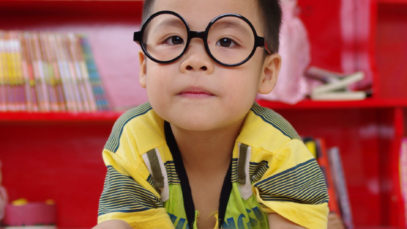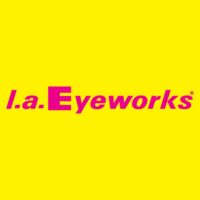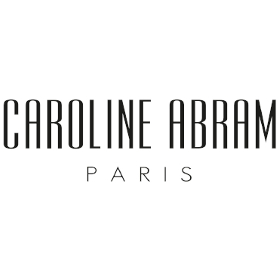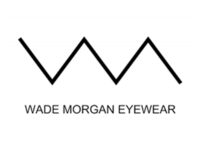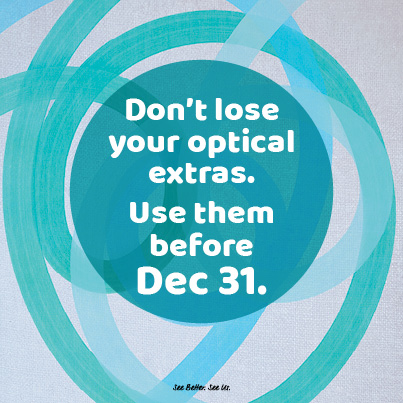We have put together a short list of frequently asked questions (FAQ’s) that are usually asked by our patients. Do you have your own question? Please feel free to contact us.
Hyperopia means that the optics of the eye are such that concentrated vision at near is more difficult than at distance. This will affect visual attention for reading, writing and computer. A person who is hyperopic may also be called longsighted.
Hyperopia is important in the early years as it may cause a turned eye (also known as strabismus).
Hyperopia is important in the early learning years as it makes attending at near more of a chore and if it is too hard, the student may avoid. This will affect learning at school. In the early years, children tend not to attend at near for long periods, and print is usually larger and more spaced and hyperopia may not be apparent till the later years when concentrated near work becomes more demanding.
Myopia is when we cannot see clearly in the distance without vision correction. In myopia the eye becomes too long and the light rays focus in front of the retina.
There is an epidemic of myopia in this generation.
In parts of South east Asia (e.g. Taiwan and Singapore) the incidence of myopia is currently 80% in secondary age students with many children beginning to show myopia at earlier ages (from age 5 and 6).
In Australia the incidence of myopia is far less-about 15% of the population and more commonly myopia starts around puberty.
Genetics and lifestyle
Myopia has a genetic predisposition but even more so myopia is linked to lifestyle and environment.
Recent studies have shown that time outdoors in some outdoor sport or leisure activity-has a strong protective effect against myopia (it was recommended that one hour per day be spent outdoors). So farming communities have significantly less myopia than do urbanised communities where there is also a greater time spent indoors studying and using the computer or watching TV.
So...the common sense conclusions are spend time outside each day playing and relaxing. Study and watch TV in moderation and try to include active leisure breaks outdoors rather than simply transferring from a study book to the computer chat line.
What are the treatments for myopia?
- Distance glasses
- Bifocal or multifocal glasses
- Myovision lenses from Zeiss
- Soft contact lenses-distance only
- Soft contact lenses-multifocal design
- Orthokeratology
- Atropine Treatment
- Laser Surgery
Links
Astigmatism means that the eye is shaped in such a way that vision may be difficult at all distances and concentrated vision may be difficult. The optics of the Astigmatic eye are such that the eye is optically like an ellipse (Australian or Rugby Football shaped) rather that a circle. As a result, the eye has to refocus at all times to keep the image clear. This may cause sensitivity to glare, blurred vision, headaches, eyestrain.
A Strabismus or Turned eye or Squint is an obvious misalignment between the eyes where on eye may turn towards or away from the nose. A child may be born like this, or an eye turn may develop as vision is used, typically an eye turn may develop at 2 to 3 years of age. Causes may be due to high degrees of hyperopia, or the muscles that control eye movements may have poor control or the muscles may not be connected properly. It can also be due to eye disease.
Treatment is either eye exercises, glasses or surgery. An assessment early is important for best treatment.
Amblyopia, or Lazy eye, develops when an eye is not used due to an eye turn, high degrees of myopia, hyperopia or astigmatism. Treatment is by glasses or eye exercises, such as eye patching. Amblyopia should not be confused with reduced vision due to eye disease. An assessment early is important for best treatment.
It can. Uncontrolled diabetes, blood pressure are general health issues that may affect vision seriously. An optometry assessment may show that general health should be investigated. Diabetics especially should have their eyes tested yearly as diabetes affects the small blood vessels in the eye compromising vision. Uncontrolled Blood pressure and high cholesterol also can affect vision. Generally, if your body is not functioning well, so will your eyes not function well.
Various factors may have bad effects on the eye and deteriorate vision.
Ultraviolet Light
The conjunctiva, the cornea, the lens and the retina can all be affected by ultraviolet light.
Both the conjunctiva and cornea, in skiing, or after a day at the beach, may become irritated causing dry, sore red eyes.
The lens of the eye may develop cataracts after years of exposure to the outdoors.
The macula, the part of the eye that we use for detailed, quality vision may also degenerate after years of exposure to ultraviolet eyes.
Age
The Vitreous, or the “Jelly” of the eye, may become more liquid as we grow older causing flashing lights.
The Retina may detach also as we age, but also other causes, resulting in flashing lights or other symptoms.
The Macula region may be affected by general health issues especially blood pressure and cholesterol.
Genetics
Look at what happened to members of your family as to whether you might develop the need for glasses, or develop cataracts or glaucoma.
I can see clearly, but I was given glasses! Why is that?
Even though you can see, can you see comfortably? Many visual tasks, such as reading, computer or even television, involve concentrated visual attention over time. This is also the case in many sports be it tennis, football, darts, chess, cricket and many others.
As our visual system tires, so will our performances and concentration.
We prescribe lenses so that your visual system works as efficiently as possible.
Why are they necessary?
Lenses are indicated when the biomechanical systems that control efficient eye focus, alignment and tracking are not working correctly. Left unattended these visual inefficiencies continue to depress performance and ultimately cause either avoidance of close work, such as, reading or further deterioration of vision.
Will they weaken eyes?
No! Whilst your eyes are working properly with glasses wear, they will then develop better skills and in this way become stronger. In most cases, after a period of wear, you find that you do not need your glasses any more.
It is important to remember that these lenses improve performance over time.
It is critical that you help the child to establish a regular and compliant wearing schedule.
This is especially important for children who have developing eyes. It means wearing the glasses for all seated classroom activities and bringing the glasses home for homework, computer and music.
Improved aspects of performance that you may notice are:
- Better concentration
- Better on task behaviour with visual materials
- Working for longer
- Less day dreaming and pauses
- Better posture - not so close to the page
- More accurate copying from the board
- Happier with small print
- More accurate
- Better reading comprehension
- Not so tired at the end of the day
Syntonics, or Phototherapy, is the therapeutic application of selected wavelengths of light on the visual system.
As we live our lives, it is our neural system that operates to enable the various parts of the body to function. The parasympathetic and sympathetic systems work hand in hand to help regulate various parts and organs of our body, so that they work correctly when required.
For various reasons, the balance that exists between the sympathetic and parasympathetic systems may be upset in certain times of certain stresses, be it cognitive (how we think) or visual.
Colours can be used to restore this balance, for example, Blue stimulates parasympathetic, and Red, sympathetic.
Syntonics has application in children and learning, but is also of help to adults.
A vision and eye health examination is a necessary first step in all assessments.
The Perceptual investigation is recommended for children from age 4½ who are:
- Experiencing learning difficulties.
- Not performing academically at the level that it is felt they should be capable of.
- Being assessed to see if they have the necessary “readiness” skills to move onto instruction at a certain level or to learn using visual materials.
- Seem to have problems with some of the visual aspects of learning. A checklist of these attributes is included with our questionnaires for both parent and teacher to fill out.
There is really no upper age limit to this testing. We see a number of older students and adult learners.
It is important to establish exactly why a student may be experiencing difficulties in learning. Within the visual area this really is quite complex.
For example the simple act of copying work from the board involves a high number of visual skills.
- Has the student seen the work clearly?
- Do they have the focusing flexibility to adjust their eyes fast enough between page and board?
- Do they have the eye alignment precision and focusing endurance to sustain this performance over a reasonable time?
- Are their eye tracking skills satisfactory to move accurately from one spot to another?
- Is their visual span or visual processing speed adequate to allow rapid enough transfer of information?
- Is their visual sequential memory adequate to allow them to transfer efficient chunks of information (and not copy letter by letter)?
- Do they have the visual discrimination and figure ground skills to rapidly find the important information from the surrounding but non-important information?
- Do they have the visual spatial skills to know where to look without getting lost and confused
Vision and Eye structure. Visual acuity is measured. This is a measure of sight and what size target can be seen.
Tests here probe for:
- Hyperopia (long sightedness), means that the eye is underpowered and vision is relatively more difficult at close distances.
- Myopia (short sightedness) means that the eye is too powerful and vision is difficult at far distances.
- Astigmatism means that the eye is irregularly shaped and vision can be difficult at all distances or other symptoms such as eye strain or glare to light may be noted.
Eye alignment skills.
Under ideal conditions we should be able to direct both eyes accurately at the same point. This should be possible at all viewing distances, automatically and easily without fatigue. If these skills are poor it can contribute to:
- Tiredness and fatigue when using the eyes,
- Visual confusion and poor accuracy while reading or copying (e.g. Board to book)
- Reduced comprehension to what is read as the brain diverts energy to eye control instead of information processing.
Focus ability.
Under ideal conditions our eyes focus without fatigue to produce a sharp clear image of what we see. If this skill is not accurate focusing will collapse over time.
Problems can range from:
- Sore eyes, blurred vision, headaches,
- Slow reading which becomes more frustrated over time,
- Poor body posture and eyes excessively close to the page causing head movement rather than eye movement along rows of print. This head-scanning behaviour encourages slow plodding reading.
Eye movements. Under ideal conditions our eyes can make both smooth following and short hop-like movements easily and accurately.
- Smooth eye movements are important particularly for sports performance e.g. ball sports,
- Short hop-like movements are important for accurate reading. The Visagraph computerized eye tracking device is used in many cases.
Colour vision. Approximately 8% of boys have defective colour vision. It is quite rare in girls. As there is no treatment available, this condition can affect learning where coloured materials are used, and can affect career choice.
Visual perception This is the awareness that the child develops of how things look different.
Skills examined here may include,
- Visual Discrimination. The simplest skill, being able to match shapes with direct inspection
- Visual Figure Ground. Being able to recognise an object despite other objects on the scene competing for attention
- Visual Memory is the ability to memorize a single object of considerable detail. This needs pictorial memory
- Visual Sequential Memory - is the ability to remember a series of symbols. Most people do this by giving the symbols a name and repeating them over and over-so it is also influenced by auditory memory.
- Visual Spatial Relations - is the ability to appreciate that things have different or similar spatial arrangements
- Visual Form Constancy is the ability to see a form and find that same form, that may be smaller larger rotated, reversed or hidden among other forms
- Visual Closure is the ability to determining, from among four unfinished forms, the one that is the same as the stimulus form
Laterality is the knowledge of right/left self. Directionality is the knowledge of right/left in space. This is important knowledge in learning about which way b,d,p,q or was/saw goes.
Visual Motor Integration
This is the skill needed to use hands and eyes together to reproduce complex spatial patterns.
It is related to maths and handwriting, knowing where things are in space, which direction they go, and what size they are. It is important in the development of visual memory, visualization and is important in the development of a sight word vocabulary especially in spelling.
Visual Span
Is the chunk of information seen in one glance, and used as a basis for whole word guessing. Visual span grows as a function of development and therefore almost all children will eventually achieve adult levels of visual span whether they have visual problems or not.
It is important in deciding whether a more phonic or more visual approach is applicable in each case when learning to read. A visual span of less than 3 digits means that the child is not yet visually ready for “whole word” reading and a more phonic approach may be better for learning to read, where the student can break words into smaller more visually manageable chunks.
Rapid Automatic Naming
This visual verbal skill determines how fast we can see something and think of its name or its verbal label. This is a very important skill linked with decoding and reading speed.
Short Term Memory
Is the ability to put information into storage for a period of minutes? It relates to how well we see and hear information and immediately react to it. Short-term auditory and visual memory functions are examined with remembered information being both written down and retold orally. Part of this assessment also looks at imagery ability that is particularly related to spelling.
Auditory Analysis Skills (Phonemic Awareness)
These abilities are necessary to hear and analyse sounds and blends within words.
Other testing can sometimes be indicated and can include investigation of the effects of using colour or coloured overlays for learning, measurement of aspects of the child’s posture and balance.
What sorts of recommendations are made?
The recommendations that are made are individual to each student. They may include the need for glasses or eye exercises. Vision therapy may be indicated, which is a program of exercises and games specifically designed to enhance the child’s areas of visual thinking difficulties. Particular advice may be useful as to the best teaching methods for this particular student.
Some students show the co-existence of other potential difficulties and benefit from referral to other professionals such as audiologists, occupational and speech therapists, psychologists and special educators.
If Vision Therapy is indicated students are re-assessed after they complete this.

